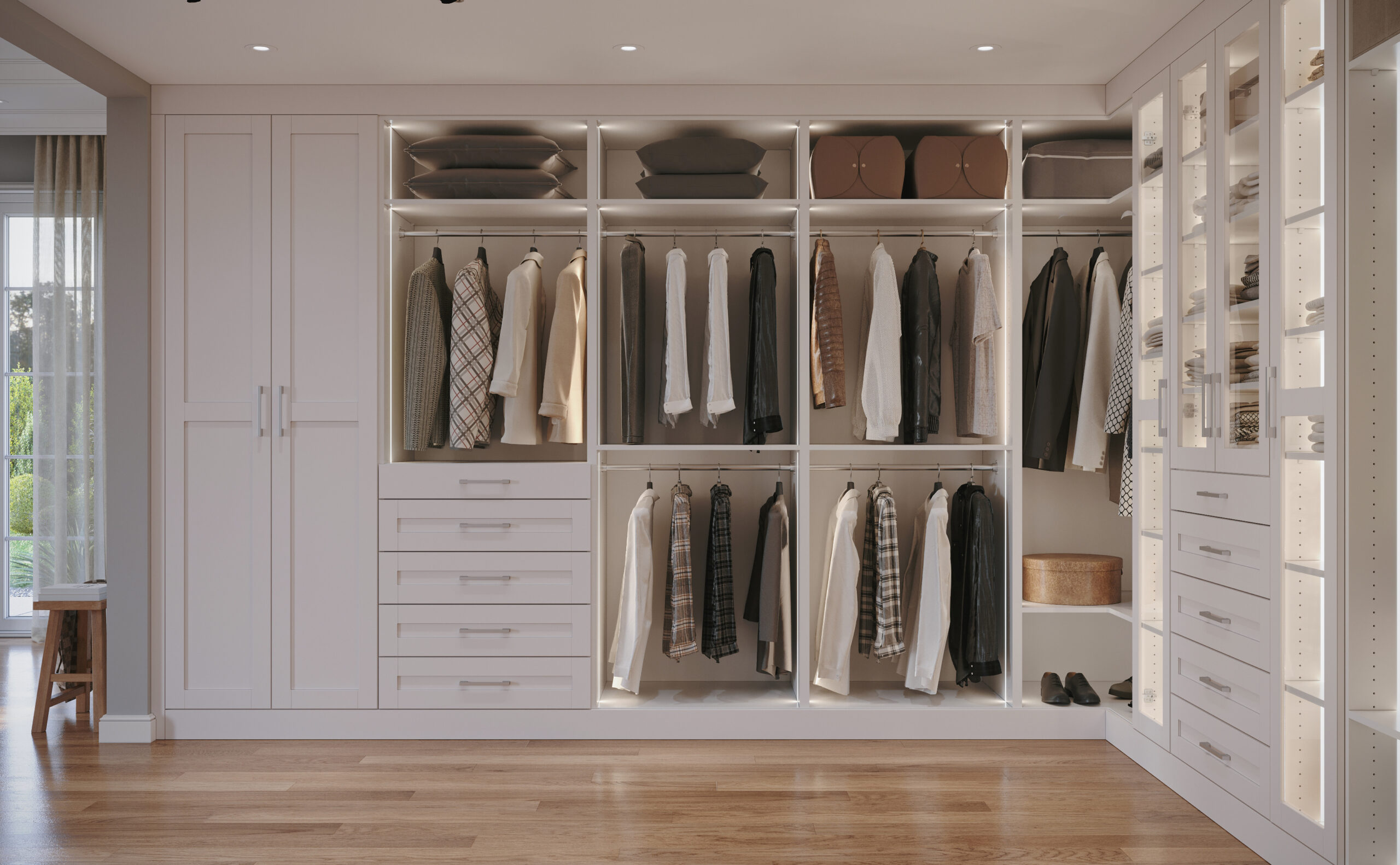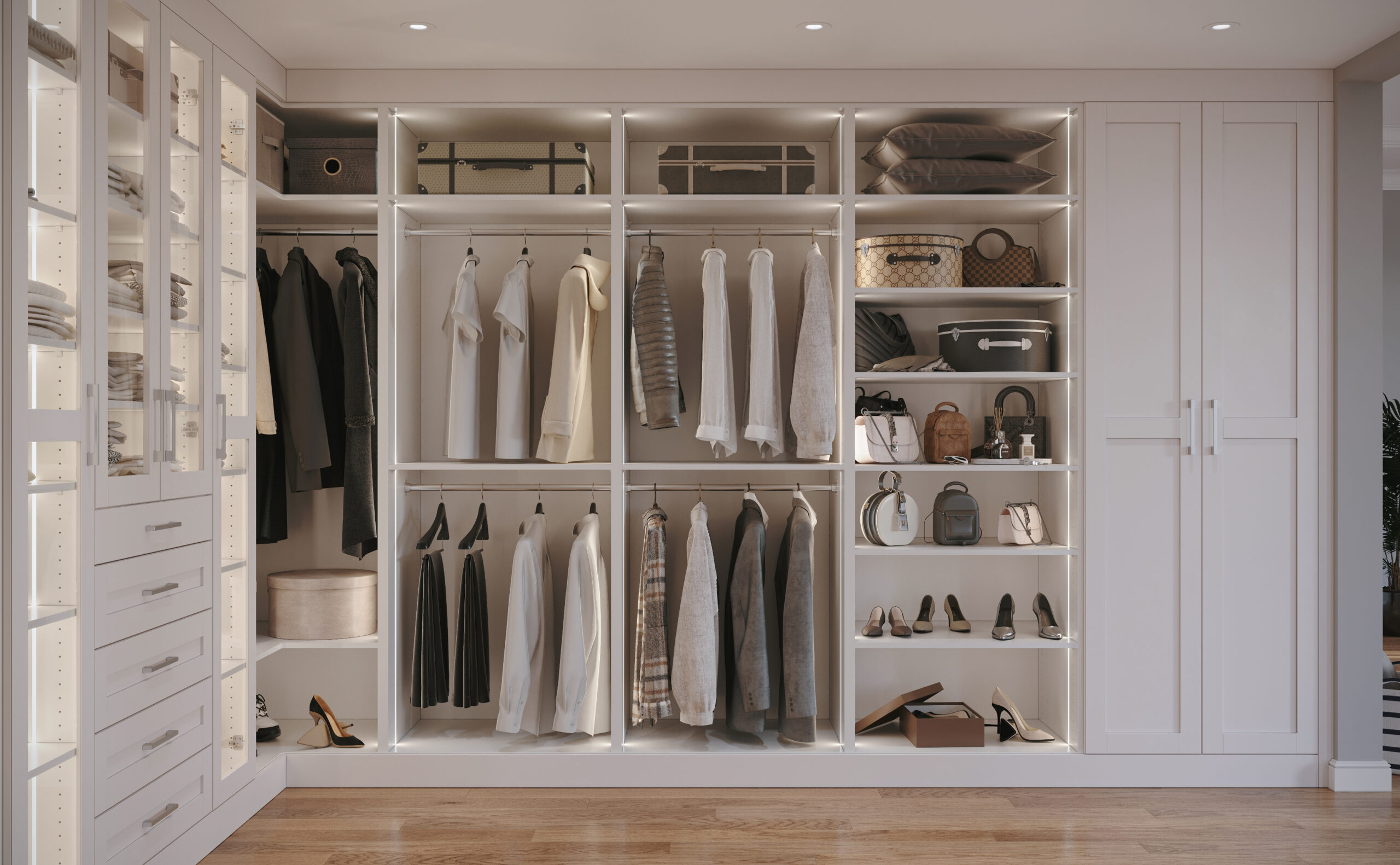DISCOUNTS ARE IN BLOOM! 30% OFF ALL CLOSETS!
Ciri Blog

From Cluttered to Organized: Transforming Spaces with Pi Closets
In today’s fast-paced world, maintaining an organized living space can feel like an impossible task. Clothes pile up on chairs, accessories scatter across surfaces, and finding what you need becomes a daily treasure hunt. If this sounds familiar, you’re not alone. Millions of people struggle with cluttered spaces that create stress, waste time, and diminish the joy of being at home. Fortunately, there’s a solution that’s revolutionizing how we think about organization: Pi Closets.
The Hidden Cost of Clutter
Before diving into the transformative power of Pi Closets, it’s crucial to understand the real impact that disorganized spaces have on our lives. Clutter isn’t just an aesthetic issue—it’s a productivity killer, a stress amplifier, and a barrier to living your best life.
Research shows that people living in cluttered environments experience higher levels of cortisol, the stress hormone, throughout the day. When your space is disorganized, your mind struggles to process information efficiently, leading to decision fatigue and mental exhaustion. Additionally, the average person spends 12 minutes daily searching for misplaced items, adding up to 44 hours per year—nearly a full work week lost to disorganization.
The financial implications are equally staggering. When you can’t find what you own, you’re likely to purchase duplicates, leading to unnecessary spending. Moreover, cluttered spaces can negatively impact property values and create safety hazards, from tripping over items to blocked emergency exits.
What Are Pi Closets?
Pi Closets represent a revolutionary approach to closet organization that combines mathematical precision with practical functionality. Named after the mathematical constant π (pi), which represents perfect circular relationships, Pi Closets are designed around the principle of creating seamless, interconnected storage solutions that maximize every inch of available space.
Unlike traditional closet systems that rely on linear thinking, Pi Closets embrace a holistic approach that considers the full three-dimensional potential of your storage area. This system incorporates curved elements, multi-level storage, and adaptive components that can be reconfigured as your needs change.
The core philosophy behind Pi Closets is that organization should be intuitive, sustainable, and beautiful. Rather than forcing your belongings into rigid categories, Pi Closets work with your natural habits and preferences to create a personalized organization ecosystem.
The Science Behind Effective Organization
Understanding the psychology of organization is key to creating lasting change. Pi Closets are designed based on several proven organizational principles:
Visual Accessibility: When you can see your belongings clearly, you’re more likely to use them and less likely to forget what you own. Pi Closets incorporate transparent containers, open shelving, and strategic lighting to ensure everything remains visible.
Categorical Grouping: Similar items stored together reduce decision-making time and create logical pathways for your daily routines. Pi Closets use designated zones for different categories while maintaining flexibility for seasonal changes.
The One-Touch Rule: The most efficient organization systems allow you to access and replace items with minimal effort. Pi Closets position frequently used items at arm’s reach and implement easy-return mechanisms.
Habit Stacking: By aligning organization systems with your existing habits, you create sustainable routines. Pi Closets can be customized to support your personal workflow, whether you’re a morning person who plans outfits the night before or someone who prefers to decide in the moment.
Planning Your Pi Closet Transformation
Successful space transformation begins with thorough planning. Before installing your Pi Closet system, invest time in understanding your specific needs, habits, and goals.
Start by conducting a comprehensive inventory of your belongings. Remove everything from your current closet and sort items into categories: keep, donate, sell, and discard. Be honest about what you actually wear and use. The goal isn’t to organize clutter—it’s to organize the items that truly serve your life.
Next, analyze your daily routines. What time do you typically get dressed? Do you plan outfits in advance or decide spontaneously? Do you have specific work uniforms or dress codes? Understanding these patterns will inform the design of your Pi Closet system.
Consider your space’s unique characteristics. Measure dimensions carefully, noting any architectural features like sloped ceilings, windows, or unusual angles. Pi Closets excel at working with challenging spaces, turning potential obstacles into organizational opportunities.
The Step-by-Step Transformation Process
Phase 1: Preparation and Planning
Begin by creating a detailed plan that includes measurements, component selections, and installation timeline. Pi Closets offer modular components that can be mixed and matched to create your ideal system. Consider factors like the ratio of hanging space to shelving, the need for specialty storage (shoes, accessories, ties), and future growth potential.
Phase 2: Installation and Setup
Pi Closet systems are designed for straightforward installation, with most components requiring only basic tools. The modular nature means you can install sections progressively, allowing you to maintain some organization throughout the process. Start with the foundational elements—typically the main hanging rods and primary shelving units—then add specialized components.
Phase 3: Strategic Placement
With your Pi Closet structure in place, begin the strategic placement of your belongings. Follow the principle of frequency-based organization: items used daily should be most accessible, weekly items at eye level, and seasonal items in less convenient locations.
Create designated zones within your Pi Closet. For example, establish a “getting ready” zone near the entrance with frequently worn items, a “special occasion” section for formal wear, and a “seasonal transition” area for items moving in and out of regular rotation.
Phase 4: System Optimization
After living with your initial setup for a few weeks, fine-tune the arrangement based on actual usage patterns. Pi Closets’ modular design makes these adjustments simple and tool-free. Move shelves, adjust hanging heights, and reconfigure compartments to better serve your real-world needs.
Maximizing Your Pi Closet’s Potential
To fully harness the transformative power of your Pi Closet, implement these advanced organization strategies:
Color Coordination: Arrange items by color within categories to create visual harmony and make selection easier. This approach also helps you identify gaps in your wardrobe and avoid purchasing similar items.
Seasonal Rotation: Use Pi Closet’s flexible storage options to rotate seasonal items efficiently. Store off-season clothing in higher or lower sections, then rotate them as weather changes.
Maintenance Schedules: Establish regular maintenance routines to keep your system functioning optimally. Weekly quick-tidying sessions and monthly deeper reorganization will prevent the gradual return of clutter.
Technology Integration: Consider incorporating technology like LED lighting systems, humidity monitors, or even inventory apps to enhance your Pi Closet’s functionality.
Common Transformation Challenges and Solutions
Even with the best systems, organization challenges can arise. Here are common issues and Pi Closet solutions:
Limited Space: Pi Closets excel in small spaces by utilizing vertical storage and corner optimization. Curved elements and multi-level systems can nearly double your effective storage capacity.
Irregular Items: Every wardrobe includes items that don’t fit standard categories. Pi Closets include adjustable and specialty components designed for unusual items like sports equipment, formal wear, or craft supplies.
Shared Spaces: When multiple people share a closet, Pi Closets can be configured with distinct zones for each person while maintaining overall system cohesion.
Changing Needs: Life circumstances change, and your organization system should adapt accordingly. Pi Closets’ modular design allows for easy reconfiguration as your needs evolve.
The Long-Term Benefits of Organized Living
The transformation from cluttered to organized extends far beyond your closet. People who implement comprehensive organization systems report significant improvements in multiple life areas:
Increased Productivity: When everything has a designated place, you spend less time searching and more time on meaningful activities. Morning routines become streamlined, and decision-making becomes more efficient.
Improved Mental Health: Organized spaces promote mental clarity and reduce anxiety. The visual calm of an organized environment creates a foundation for mental well-being.
Enhanced Creativity: When your physical environment is organized, your mind is free to focus on creative pursuits rather than managing chaos.
Better Financial Management: Organization improves your awareness of what you own, reducing unnecessary purchases and helping you make more intentional buying decisions.
Stronger Relationships: Organized shared spaces reduce household stress and create more harmonious living environments.
Maintaining Your Organized Space
Creating an organized space is only half the battle—maintaining it requires ongoing commitment and smart strategies. Pi Closets are designed to make maintenance as effortless as possible, but developing good habits is essential for long-term success.
Implement the “one in, one out” rule to prevent accumulation. When you acquire a new item, remove something you no longer need. This maintains equilibrium and prevents gradual expansion of belongings.
Schedule regular “reset” sessions where you return items to their designated places and assess whether any adjustments are needed. These don’t need to be lengthy—even 10 minutes weekly can maintain system integrity.
Stay flexible and open to modifications. As your life changes, allow your organization system to evolve accordingly. Pi Closets’ adaptability makes these changes seamless and stress-free.
Your Journey to Transformation
Transforming a cluttered space into an organized haven with Pi Closets is more than just a home improvement project—it’s an investment in your quality of life. The benefits extend far beyond aesthetics, touching every aspect of your daily routine and long-term well-being.
The journey from chaos to calm isn’t always easy, but with the right system and commitment, it’s absolutely achievable. Pi Closets provide the framework for lasting organization, but the real transformation happens when you embrace the principles of intentional living and mindful consumption.
Remember that organization is a personal journey. What works for others might not work for you, and that’s perfectly fine. The goal is to create a system that serves your unique lifestyle, supports your goals, and brings you joy every time you open your closet door.
Starting your transformation today means taking the first step toward a more organized, efficient, and peaceful way of living. With Pi Closets as your foundation and these principles as your guide, you have everything needed to turn your cluttered space into an organized sanctuary that truly enhances your life.
Devon Lane

- Genel (11)
- Maximize Every Inch: The Benefits of Modular Closet Systems 06/26/2025
- From Cluttered to Organized: Transforming Spaces with Pi Closets 06/19/2025
- Designing Your Dream Closet: How Pi Closets Makes It Simple and Affordable 06/12/2025
- Maximizing Home Value: The ROI of Custom Closet Renovations 05/14/2025
- Seasonal Closet Organization: Master Efficient Wardrobe Rotation 05/07/2025



